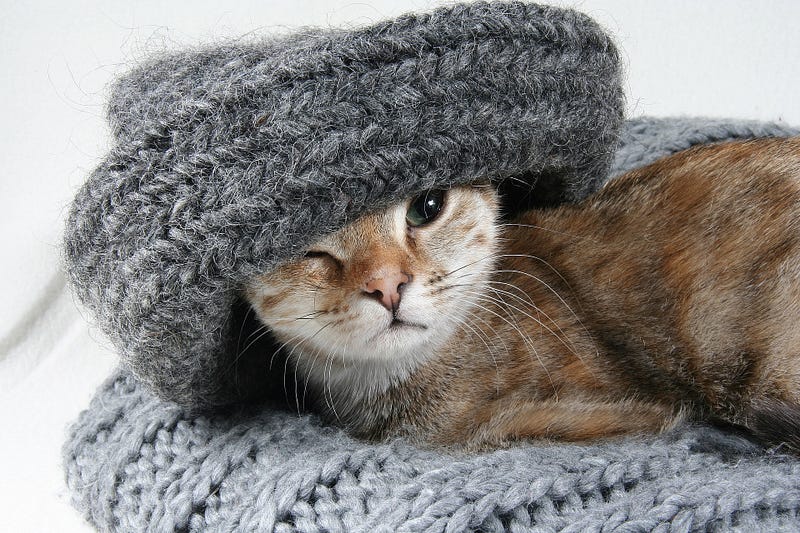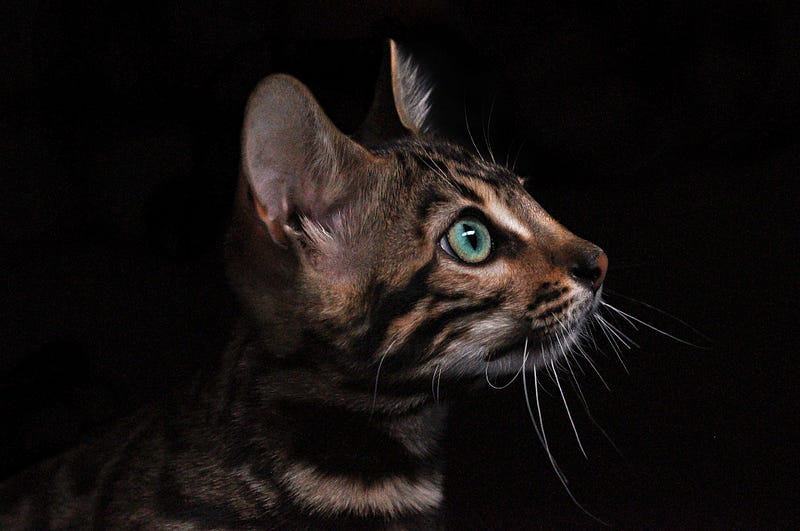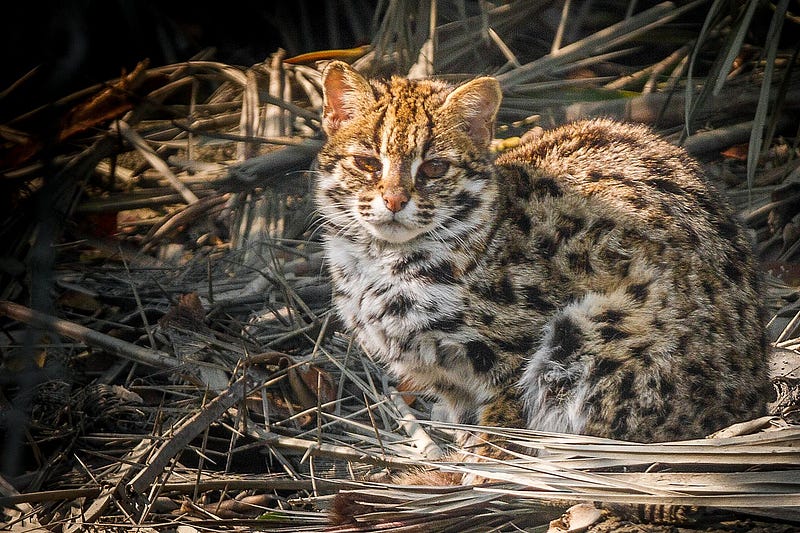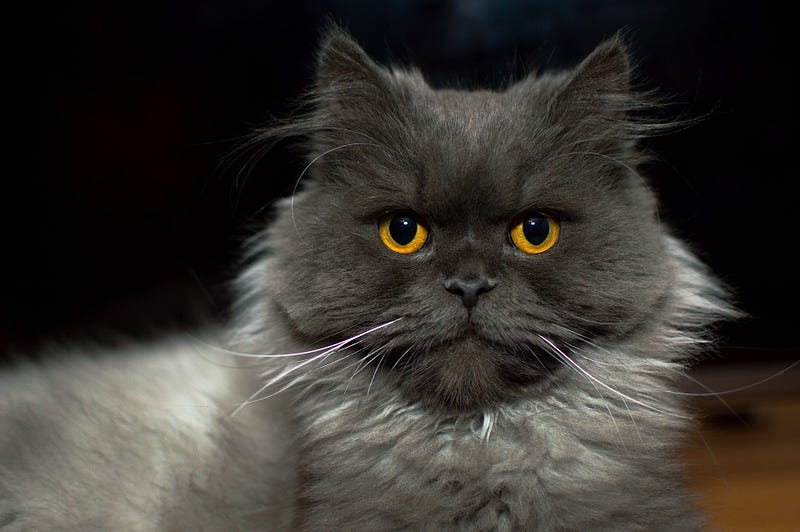The Fascinating Journey of Cat Domestication Across Cultures
Written on
Chapter 1: Origins of Cat Domestication
How did domestication of cats come about? This process unfolded in two significant phases across at least three distinct global regions.
The first instance of domesticated feral cats emerged in the Middle East, later spreading to Egypt several millennia later. Notably, similar developments were also taking place in China. Recent scientific studies have greatly enhanced our understanding of this domestication process.

According to archaeological evidence, the domestication of cats is deeply intertwined with ancient Egyptian culture, potentially dating back at least 3,500 years. However, signs suggest that this process began even earlier in different locations. So, how exactly were cats domesticated and where did it all start?
Section 1.1: The Middle Eastern Beginnings
The domestic cat is a descendant of the wild Nubian cat (Felis silvestris lybica). It is believed that the initial domestication efforts occurred over 9,000 years ago, primarily by early agriculturalists in the Middle East. These farmers attracted cats due to the presence of rodents, which were drawn to the grains stored by humans. Notably, in Cyprus, a cat was discovered buried alongside a human, dating back to around 9,500 years ago.
Research conducted at the Jacques Monod Institute in Paris analyzed mitochondrial DNA from over 200 cats, including remains from Viking graves, Egyptian mummies, and Stone Age artifacts. Genetic evidence supports the theory that these animals were domesticated in the Fertile Crescent, an area that extends from Egypt through Syria to Mesopotamia.
In this relationship, humans benefited from having a predator to control grain-eating rodents, while cats enjoyed an abundant food source. Interestingly, studies indicate that the brains of domesticated cats have decreased in size over time, likely due to a lower number of neural crest cells responsible for threat response. This change may be attributed to the reduced dangers faced by cats living among humans compared to their wild counterparts.

Section 1.2: Cats in Ancient Egypt
Approximately 6,000 years after their domestication, cats made their way to ancient Egypt through maritime trade routes. By the time of the Romans, these felines had proliferated throughout Europe. Remarkably, DNA from an Egyptian cat was even identified at a Viking port.
Egypt is also home to the oldest known depictions of cats wearing collars, dating back to 2600 BC, as well as the earliest skeletal remains of 17 individuals interred alongside their food bowls (1900 BC). The taming of wild animals held significant importance in ancient Egyptian religious practices. Notably, the Egyptians were known to domesticate various species, including crocodiles and lions, indicating their interest in cats.
In Egyptian society, cats were venerated and often associated with divinity. Historical records from Herodotus indicate that by the mid-fifth century BC, there were temples filled with cats that were cared for by priests. Cats were highly regarded in households, and the death of a pet resulted in a period of mourning, during which family members would shave their eyebrows. The deceased cat would be mummified and buried in a specialized cemetery, with hundreds of thousands of such mummies discovered to date.
The penalty for harming a cat was severe, often resulting in execution, as Egyptians took great measures to protect their domesticated felines and forbade their export.
Chapter 2: Independent Domestication in China
This video explores the fascinating processes behind how cats were domesticated multiple times across different cultures.
The story of cat domestication extends beyond Egypt and the Middle East; it also took place independently in East Asia. In China, a different species, the Bengal cat (Prionailurus bengalensis), was domesticated. This distant relative of the Nubian cat still inhabits East Asia today and tends to thrive in human-populated areas. Archaeological finds suggest that cat bones dating back to around 3500 BC have been uncovered in China.

During the initial agricultural phase, it is plausible that Bengal cats were attracted to human settlements due to the abundance of rodents seeking grains. Interestingly, the domestic cats seen in China today are not descendants of the Bengal cat; instead, they trace their lineage back to the domesticated Nubian cat, which was later brought from the West. Researchers suggest that after the Neolithic period, cats from the Middle East replaced the Bengal cat population in China.
Section 2.1: The Role of Sea Trade
The expansion of cat populations was greatly facilitated by maritime transport, enabling them to serve as ship cats. Today, cats can be found across all continents except Antarctica. The variety of cat breeds is astounding, ranging from the fluffy Persian and Norwegian Forest Cats to the hairless bambino cats with short, stubby legs.
Interestingly, the emergence of brindle cats likely occurred during the medieval era, with genetic studies indicating that the mutation associated with their appearance originated in western Turkey around the 14th century. This characteristic, now seen as common, gained global popularity due to its aesthetic appeal. It was during this period that cats began to be appreciated more for their looks than their hunting abilities.
Unlike dogs, selective breeding of cats was uncommon until the 19th century, resulting in domestic cats retaining much of their genetic similarity to their wild ancestors. Consequently, they are generally less sociable than dogs, with selective breeding leading to both the largest and most unusual cat breeds.

Chapter 3: The Environmental Impact of Domestic Cats
This video delves into the environmental consequences of domestic cats and their role as invasive species.
Domestic cats rank among the most hazardous invasive species globally. In the 19th century, they were introduced on ships to control rat populations, subsequently spreading to locations that previously had no predators.
Their impact is particularly detrimental to island-dwelling bird species that often nest on the ground and are less flight-capable. Even in ecosystems with natural predators, domestic cats have become dominant. They reproduce rapidly and are remarkably resilient, posing a threat to wildlife worldwide, from Australia to Europe and the United States.
On average, a single cat is responsible for the deaths of 180 animals each year. The most effective solution may be to keep cats indoors, as even those fed meat retain their predatory instincts.
Did you enjoy this article? If so, please leave a comment, a clap, or consider leaving a tip to support my writing efforts. Feel free to follow for more articles posted daily. Thank you!